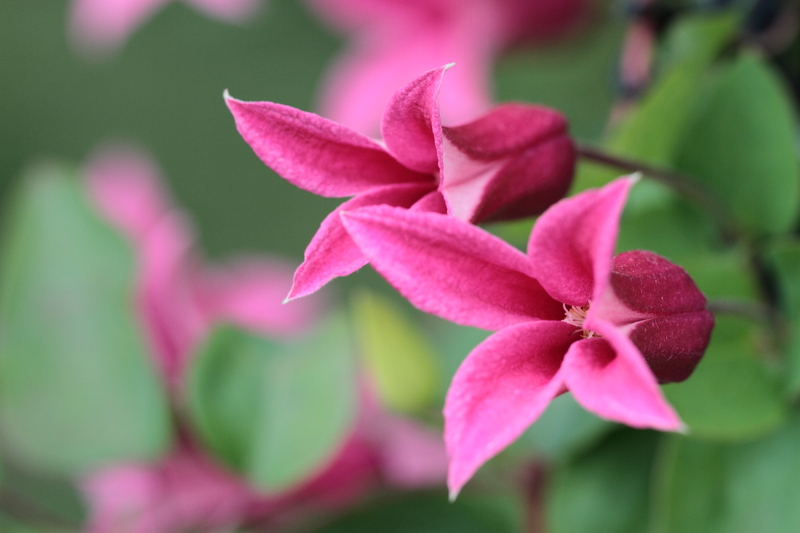Unveiling the Secrets of Container Gardening
Posted on 22/08/2025
Unveiling the Secrets of Container Gardening
Are you ready to transform even the smallest space into a lush oasis? Container gardening is the secret art of growing vibrant flowers, juicy vegetables, fragrant herbs, and even small trees in pots, boxes, or other vessels. This method is perfect for urban gardeners, balconies, patios, or anyone with limited space. In this comprehensive guide, we'll unveil the secrets of successful container gardening - from choosing the right pots and soil to troubleshooting pests and maximizing your harvests.

What is Container Gardening?
Benefits of Container Gardening
- Space Efficiency: Perfect for small patios, balconies, rooftops, and indoor spaces.
- Mobility: Easily move your plants to capture the best sunlight or protect them from bad weather.
- Pest and Disease Management: Isolating plants in containers helps control soil-borne diseases and pests.
- Creative Expression: Mix and match colors, styles, and heights for an artistic display.
- Accessibility: Elevate containers for effortless gardening, ideal for seniors or those with limited mobility.
Choosing the Right Containers for Container Gardening
Selecting the right planter is more than an aesthetic decision; it's crucial for healthy root systems and plant vigor. Here are some types and tips:
Common Container Types
- Terra Cotta and Clay Pots: Classic and breathable, ideal for herbs and Mediterranean plants, but can dry out quickly.
- Plastic Containers: Lightweight, affordable, and retain moisture well. Great for beginners.
- Ceramic and Glazed Pots: Visually appealing and durable, but may be heavy and less porous.
- Wooden Boxes or Barrels: Rustic, natural insulation, perfect for edibles, but may rot if untreated.
- Metal and Fiberglass Containers: Modern look, long-lasting, though may heat up or cool down rapidly.
- Fabric Grow Bags: Promote air pruning of roots and improved drainage.
Tip: Ensure containers have adequate drainage holes to prevent waterlogging and root rot - a secret to thriving container gardens.
The Magic of Potting Mix: Soil Secrets Revealed
The foundation of a successful container garden lies in the potting mix. Unlike ground soil, containers require a blend that retains just enough water, offers essential nutrients, and allows for air circulation.
- Soilless Potting Mix: Light and free of soil-borne diseases, typically composed of peat moss or coco coir, perlite, and vermiculite.
- Compost-Enhanced Mixes: Add compost for extra nutrients and beneficial microbes.
- Water-Retentive or Well-Draining: Match your mix to the plants you're growing. Succulents and cacti need sandier, well-drained mixes, while vegetables or flowers thrive in moisture-retentive blends.
Secret tip: Layer the bottom of containers with pebbles or broken pottery only if extra drainage is needed, but most modern mixes drain well on their own.
The Best Plants for Container Gardening
Almost any plant can be grown in containers if you meet its basic needs. Here are top picks for container garden success:
Edible Delights: Grow Your Own Food
- Herbs: Basil, thyme, oregano, mint, and parsley thrive in compact pots.
- Leafy Greens: Lettuce, spinach, arugula, and Swiss chard offer quick, repeat harvests.
- Vegetables: Tomatoes, peppers, eggplants, radishes, and bush beans adapt well to containers.
- Vertical Crops: Cucumbers, peas, and pole beans climb stakes or trellises in pots.
- Small Fruits: Strawberries and dwarf blueberries are perfect for hanging baskets or large pots.
Ornamental Beauty: Flowers and Foliage
- Bedding Plants: Petunias, geraniums, pansies, and marigolds provide color from spring to fall.
- Shade-tolerant: Ferns, coleus, and impatiens brighten up covered patios.
- Sun-lovers: Lavender, salvia, and zinnia bask in bright spots.
- Vining and Trailing: Ivy, sweet potato vine, and nasturtium spill beautifully over edges.
Note: Always select plant varieties specifically bred for compact growth or containers; these thrive better than standard garden types.
Arranging & Designing Your Container Garden
Artistry meets practicality in container garden design. Here's what to consider to make your display both beautiful and bountiful:
The Thriller, Filler, Spiller Formula
- Thriller: The focal plant--tall or striking (e.g., ornamental grass, dwarf shrub).
- Filler: Mid-height plants (e.g., geraniums, begonias) to fill the space.
- Spiller: Trailing plants (e.g., sweet potato vine, lobelia) to tumble over the edges.
Spacing, Grouping, and Layering
- Don't overcrowd--roots need space to breathe!
- Group containers of varying heights for visual impact and microclimates.
- Layer shade-loving plants beneath taller sun-lovers when containers share space.
Seasonal Swaps
- Refresh pots with spring bulbs, then swap in summer annuals, and later autumn mums or ornamental kale.
- Use evergreens like dwarf boxwoods or conifers for winter interest.
Watering Wisdom: Keeping Container Gardens Thriving
Soil in pots dries out faster than in-ground beds, making watering routines the most crucial secret to container gardening success.
- Check soil moisture daily, especially in summer.
- Water thoroughly until water drains from the bottom; shallow watering encourages weak roots.
- Self-watering containers and drip irrigation are excellent for busy or forgetful gardeners.
- Morning watering helps minimize evaporation and prevent leaf diseases.
- Mulch the surface with pebbles, bark, or coir to retain moisture and suppress weeds.
Fertilization and Nutrient Management
Nutrient depletion is common in container gardening due to frequent watering. A regular feeding schedule keeps your plants healthy and productive.
- Use a slow-release fertilizer at planting time for a steady supply of nutrients.
- Supplement with a liquid fertilizer every 2-3 weeks, tailored for vegetables or flowers as needed.
- Add fresh compost or worm castings occasionally for a nutrient boost and healthy soil life.
Solving Common Container Gardening Challenges
Pests and Diseases
- Monitor for aphids, spider mites, and whiteflies - wipe leaves or spray with insecticidal soap if needed.
- Watch for fungal issues due to poor air flow or overwatering. Always remove diseased leaves promptly.
Environmental Stresses
- Sunscald or Wilting: Move pots to temporary shade during extreme heat.
- Rootbound Plants: If roots circle the pot, it's time to repot into a larger container.
- Salt Buildup: Leach container soil with clean water monthly to flush out salts from fertilizers.
Maximizing Success: Expert Container Gardening Strategies
- Choose the right plants for your conditions: Assess sunlight, wind, and humidity before making your plant list.
- Use light-colored pots: They reflect heat and keep roots cooler in summer.
- Elevate containers: Place pots on bricks or stands for improved drainage and airflow.
- Rotate displays: Change arrangements seasonally to keep your space fresh and engaging.
- Practice succession planting: Start seeds or plugs indoors to quickly refill containers as crops are harvested.
Eco-Friendly Container Gardening Tips
- Reuse old buckets, crates, or storage bins as containers for an upcycled look.
- Opt for peat-free, eco-friendly potting mixes to decrease your environmental footprint.
- Collect rainwater for watering - gentle for both your plants and the planet.
- Create compost tea from kitchen scraps to feed your plants naturally.
Container Gardening for Beginners: Getting Started Checklist
- Pick a spot: Assess your sunlight and select an appropriate area.
- Select containers: Ensure they're large enough and have drainage holes.
- Choose potting mix: Select a blend that suits your plant type.
- Pick plants: Start with easy-growers like herbs, marigolds, or lettuce.
- Water and feed: Keep up with regular watering and monthly fertilization.
- Enjoy and observe: Watch as your mini garden flourishes and learn from each season.

Frequently Asked Questions About Container Gardening
Q: Can you use garden soil in containers?
A: No. Garden soil is too heavy and may harbor pests or diseases. Always use a quality potting mix for container gardening.
Q: How often should you water container plants?
A: Frequency depends on plant type, container size, temperature, and potting mix. Check daily; some plants may need watering once or even twice a day in hot weather.
Q: What are the best vegetables for container gardening?
A: Compact varieties of tomatoes, lettuce, peppers, radishes, herbs, and bush beans all excel in containers.
Q: How do you fertilize a container garden?
A: Use slow-release fertilizer during planting and supplement every 2-3 weeks with liquid feeds, following the label instructions for quantity.
Q: Can I keep container gardens year-round?
A: Absolutely! Rotate plants by season, use evergreens, and bring delicate containers indoors during harsh winters.
Conclusion: Grow More, Anywhere - The Container Gardening Revolution
Whether you're a seasoned gardener or just starting out, container gardening offers endless possibilities for creativity, productivity, and joy. By understanding the secrets of soil, plant selection, watering, and design, you'll unlock the full potential of even the smallest space. Start your container gardening journey today and watch your world blossom!
For more expert tips and inspiration on all things container gardening, bookmark this guide and begin your green adventure now!



